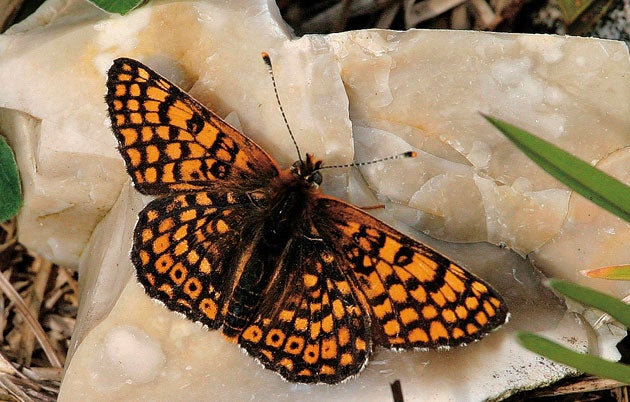Glanville fritillary

Your support helps us to tell the story
From reproductive rights to climate change to Big Tech, The Independent is on the ground when the story is developing. Whether it's investigating the financials of Elon Musk's pro-Trump PAC or producing our latest documentary, 'The A Word', which shines a light on the American women fighting for reproductive rights, we know how important it is to parse out the facts from the messaging.
At such a critical moment in US history, we need reporters on the ground. Your donation allows us to keep sending journalists to speak to both sides of the story.
The Independent is trusted by Americans across the entire political spectrum. And unlike many other quality news outlets, we choose not to lock Americans out of our reporting and analysis with paywalls. We believe quality journalism should be available to everyone, paid for by those who can afford it.
Your support makes all the difference.One of the most localised of all our wildlife species, found only in the Isle of Wight, apart from occasional sightings on the nearby Hampshire coast. Similar in appearance to the rare heath fritillary but the beige and orange bands on the underwings are distinctive. Named after Lady Eleanor Glanville, who first captured specimens in the 1690s.
Larval foodplant: Ribwort plantain
Where seen: The undercliffs and chines of the coast of the Isle of Wight
Current conservation status: One of Britain's rarest butterflies because of its localised status but despite enormous fluctuations in the population from year to year, no evidence of any major decline.
Join our commenting forum
Join thought-provoking conversations, follow other Independent readers and see their replies
Comments